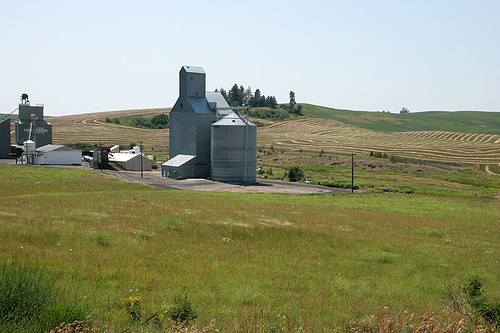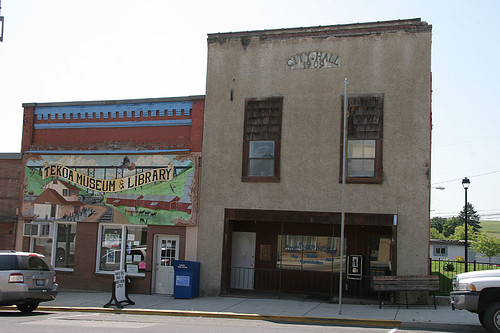Palouse

Steptoe Butte Vista
South of Spokane is an area of broad rolling hills and prairies called the Palouse. The area was settled in the 1880 when experiments in dryland farming were successful. By the beginning of the 1900’s, all of the land was converted into wheat fields. Today wheat is the major crop along with barley, peas and lentils.
Much of the area remains the same as it was in the early 1900’s. Highway 27 curves and rolls through the hills and ravines. It is the main street of many of the small historic towns located about 12 miles about – the distance between rail stops.
It is also a photographer’s dream. The hills curve and roll with interesting lines and patterns. In June, the fields are green with new growth and brown from newly plowed fields. In August, huge combines machines cut across the rolling fields as the farmers rush to harvest their crops. In July, the hills are brilliant emerald green as they ripen in the summer sun.
We headed south out of Spokane and turned towards Waverly. Sugar beet was the major crop early in the 1900’s but today it is known more for its busy grain elevators. Next town was Latah with its lovely old homes. Tekoa was my favorite. It felt like the quintessential small town with its restored Empire theater, 1909 city hall and mural-faced library. It also has a great train trestle evidence of the influence of the railroad.
Steptoe Butte was our destination. This ancient rock butte rises 1,600ft above the green, tan and brown fields. The road to the top curls around the butte to the top where you have a 360 degree vista. It feels like you are eye level with the clouds.
A quick stop at the local farmers truck stop for a cold drink and a salty snack and then we were on our way back to Spokane. We did a quick detour to one more small town, Rosalia. You pass a multiple arch concrete railroad trestle on the way into town – looking similar to a roman aqueduct. The town is sleepy in the warm afternoon sun. It is also the site of the Steptoe Memorial commemorating the 1858 battle between the U.S. Army and local Indian warriors. The Army lost the battle and retreated.

Waverly Grain Elevators






Incredible photos! As I look at the map, I’m sure I’ve been in this area (many years ago), but I don’t remember it at all.
I do remember the drive in your other post about the Columbia Basin. Your photos are really spectacular!
Love your photos, Marta!